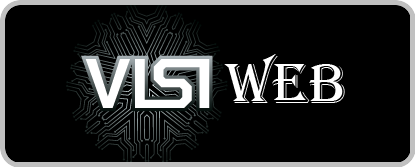VLSI engineers work in a fast-paced field that needs a wide range of skills. TCL (Tool Command Language) is a key tool for us. It’s crucial in electronic design automation (EDA) and digital design. This guide will cover important TCL interview questions, including basic concepts, advanced techniques, and how TCL works with EDA tools.
We start with TCL’s basics, like its syntax and commands. We’ll also look at variables and data types. Then, we’ll explore control structures and loops that help automate tasks. These skills are essential for tackling the semiconductor industry’s challenges.
Next, we’ll get into advanced TCL scripting. This includes file handling, input/output operations, and regular expressions. We’ll also cover error handling to help you fix and debug TCL scripts. This ensures your VLSI designs are reliable and efficient.
Our aim is to give you a deep understanding of TCL and its use with EDA tools. This guide is for both experienced VLSI engineers and those new to the field. It will help you shine in your next TCL interview and beyond.
Table of Contents
Understanding TCL Fundamentals for VLSI Design
For VLSI engineers, knowing TCL basics is key. TCL is a scripting language that helps us automate tasks. It makes our design work more efficient and boosts productivity.
Basic TCL Syntax and Commands
TCL’s syntax is simple, and it has many built-in commands. We’ll learn how to write TCL scripts. This includes setting variables, running commands, and controlling the script flow. We’ll look at important commands like set, puts, if, for, and while.
Variables and Data Types in TCL
TCL makes working with variables and data types easy. We’ll cover different variable types and how to use them. Knowing TCL’s data types, like strings and numbers, helps us write better scripts for VLSI projects.
Control Structures and Loops
- Conditional Statements: We’ll learn about
if-then-elseandswitchstatements. They help us make decisions based on conditions. - Looping Constructs: TCL has
for,while, andforeachloops. They let us repeat tasks and work with data. - Procedures and Functions: TCL supports creating our own procedures and functions. This helps us organize code, make it reusable, and improve script modularity.
By understanding TCL basics, we’re ready for more complex VLSI automation tasks. TCL scripting is a powerful tool in our daily design work.
TCL Interview Questions and Essential Concepts
As VLSI engineers, we often face TCL-related questions in job interviews. These questions test our TCL knowledge and how we apply it in real-world scenarios. We’ll look at common TCL interview questions and the key concepts they cover.
Common TCL Interview Questions
- Explain the basic syntax and structure of a TCL script.
- Describe the different data types available in TCL and how to work with them.
- How would you implement control structures, such as conditional statements and loops, in a TCL script?
- Discuss the role of variables in TCL and how to manipulate them effectively.
- Share your experience with file handling and I/O operations in TCL, including reading from and writing to files.
- Demonstrate your knowledge of regular expressions and their application in TCL scripts.
- Explain how to handle errors and exceptions in TCL scripts, and discuss best practices for error handling.
Essential TCL Concepts for VLSI Engineers
- TCL scripting best practices: Understand the importance of following coding standards, modularizing scripts, and using comments to enhance code readability and maintainability.
- Integration with EDA tools: Learn how to leverage TCL’s integration capabilities to automate tasks and streamline VLSI design workflows.
- Performance optimization: Explore techniques for optimizing TCL script performance, such as efficient data manipulation, parallel processing, and memory management.
- Debugging and troubleshooting: Develop proficiency in debugging and troubleshooting TCL scripts, using tools and techniques to identify and resolve issues in VLSI design environments.
By mastering these TCL interview questions and essential concepts, VLSI engineers can show their TCL expertise. This makes them valuable assets in the industry.
Advanced TCL Scripting for Digital Design
As VLSI engineers, we often use advanced TCL scripting to make our digital design work easier. We’ll look at key techniques that boost our TCL skills. These include handling files, input/output, regular expressions, and errors.
File Handling and I/O Operations
Good file management is key in digital design automation. We’ll learn about TCL’s file commands like open, read, write, and close. These commands help us work with different file types, like text and binary.
Knowing how to use these TCL file operations lets us automate tasks. This makes our work more efficient.
Regular Expressions in TCL
Regular expressions, or regex in TCL, are great for finding patterns in text. We’ll learn how to use regex in TCL for advanced text processing. This includes data validation and search-and-replace.
By using regex in TCL, our advanced TCL scripts become more powerful. They’re essential for digital design automation.
Error Handling Techniques
Even the best scripters face errors. We’ll explore TCL’s error handling, including try-catch blocks and custom error messages. Learning these techniques helps our advanced TCL scripts handle errors well.
This knowledge helps us overcome complex challenges in digital design automation. It makes us better VLSI engineers.
TCL Integration with EDA Tools
As VLSI engineers, we see Tcl as key in semiconductor design. It works well with EDA tools, changing how we do VLSI automation and design.
Tcl’s strength is in working with EDA software. It lets us automate tasks, make design flows smoother, and work faster. Here’s how Tcl makes EDA tool integration and VLSI automation better:
- EDA Tool Scripting: Tcl scripts automate EDA tool functions like design synthesis and timing analysis. This saves time and effort on manual tasks.
- Design Data Manipulation: Tcl scripts work with EDA tool databases. They help us manage and analyze design data, keeping it consistent and traceable.
- Workflow Automation: Tcl with EDA tools creates detailed VLSI automation workflows. These workflows include tasks like design regressions and report generation.
Tcl’s integration with EDA tools has changed VLSI design. It helps us work more efficiently, reduce mistakes, and control the design flow better. As we use Tcl more in semiconductor design, we’ll find new ways to improve EDA tool integration and VLSI automation.
TCL Performance Optimization for VLSI Scripts
Improving TCL script performance in VLSI design is key for efficient semiconductor development. VLSI projects are complex and large, so fast and resource-light TCL code is vital. We’ll look at effective TCL optimization techniques to boost your VLSI script performance.
Writing efficient TCL code is crucial. This means avoiding unnecessary loops, using TCL’s built-in commands, and skipping operations that use a lot of resources. By structuring your TCL scripts well, you can see big performance improvements without losing functionality.
Strategies for Efficient TCL Coding
- Use TCL’s powerful built-in commands to cut down on custom script logic.
- Reduce nested loops and optimize loop structures for faster execution.
- Use TCL’s string manipulation to make data processing tasks smoother.
- Implement caching to store and reuse data, cutting down on repeated calculations.
Understanding how your script’s complexity affects VLSI tool performance is also important. Complex TCL code can slow down EDA tools, causing long simulation times and delayed design updates. By profiling your TCL scripts and finding performance bottlenecks, you can make focused optimizations to improve your VLSI workflows.

In conclusion, mastering TCL optimization is vital for VLSI engineers looking to streamline their design processes. By following best practices for efficient TCL coding and understanding the performance impact of your scripts, you can see major improvements in VLSI script performance. This will help increase productivity in your VLSI design projects.
Debugging and Troubleshooting TCL Scripts in VLSI Environments
As VLSI engineers, we use TCL scripts to automate our work. But sometimes, these scripts face issues. We need good debugging and troubleshooting methods. Here, we’ll look at common TCL debugging problems and how to solve them in VLSI design.
Finding the cause of TCL errors can be tough. TCL’s dynamic nature and VLSI design’s complexity make it hard. We should use TCL’s debugging tools like puts, tracecmd, and catch. They help us understand the script’s behavior and find the problem.
Regular code reviews and unit testing are also key. They help us find and fix TCL script issues early. By doing this, we can avoid spending a lot of time debugging later.
Understanding TCL error messages is important. TCL errors in VLSI can include syntax mistakes, variable issues, and data type problems. Knowing these errors and how to fix them helps our scripts work better.
Working with TCL and EDA tools like Synopsys, Cadence, and Mentor Graphics adds complexity. We need to know how TCL commands work in these tools. Using the help from these vendors is crucial for solving TCL problems in our work.

Learning to debug TCL scripts well is key for VLSI engineers. It helps us make our scripts more reliable and efficient. Whether it’s fixing errors, improving script speed, or working with EDA tools, these skills are essential for better design automation.
Conclusion
Mastery of TCL is key for VLSI engineers looking to grow in the semiconductor field. We’ve looked at TCL’s basics and advanced scripting. These topics are vital for success in TCL-based VLSI design and development.
Improving your TCL skills helps you ace interview questions and stand out in VLSI teams. Knowing how to use TCL with EDA tools and solve problems makes you valuable. This is crucial in the competitive semiconductor job market.
Keep practicing TCL and stay updated with industry trends. Join online forums and communities. Always look for new techniques and best practices. This will make you a top TCL-proficient VLSI engineer, opening doors to career growth and advancement.

